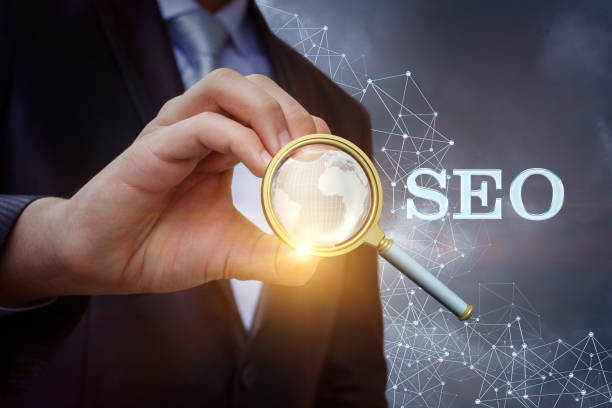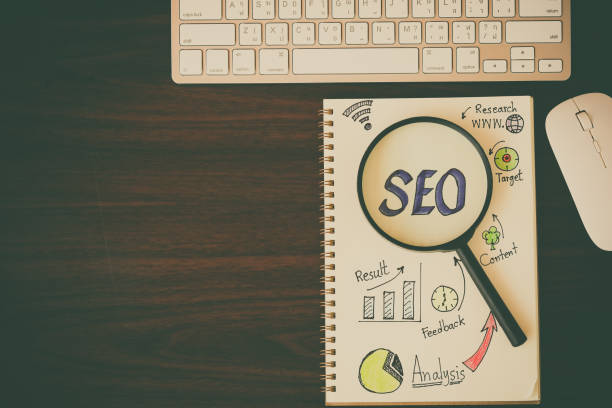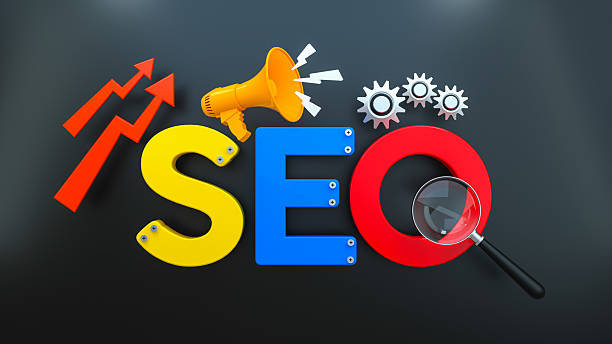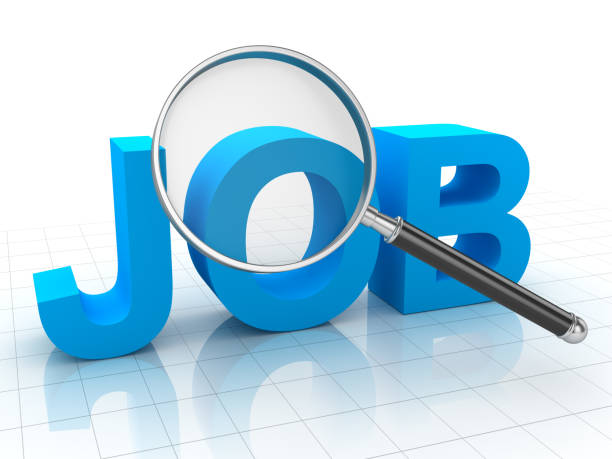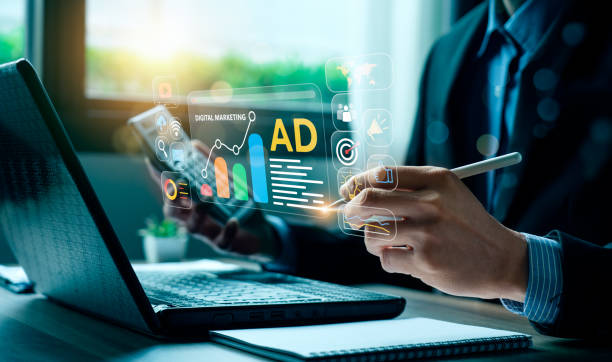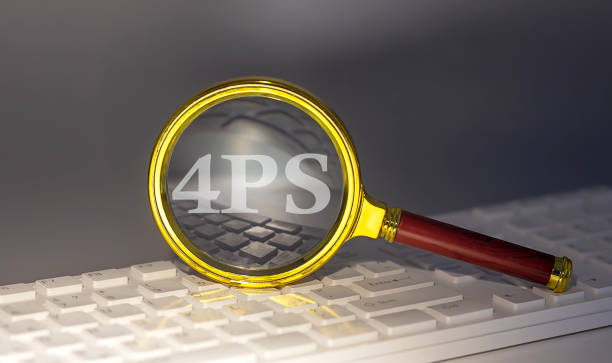What is On-Page SEO and Why Does it Matter?
On-Page SEO, or On-Page SEO, refers to the set of actions you take within your website to improve your site’s ranking in search engines like Google.
These actions include optimizing content, site structure, HTML tags, and other internal elements of the website.
Why does #On_Page_SEO matter? Because it helps search engines better understand the subject and quality of your content, and as a result, rank your website higher in search results.
Without strong on-page SEO, even the best content may not be seen.
In other words, on-page SEO is the foundation for the success of any SEO strategy.
With on-page SEO, you help Google better crawl and index your site.
On-page SEO is a fundamental pillar in increasing organic site traffic.
Without attention to on-page SEO, your off-page SEO efforts will be wasted.
By optimizing the internal factors of the site, you increase the chance of being seen in search results and attracting the target audience.
More information about SEO
Are you unhappy with the low conversion rate of visitors to customers on your online store?
Solve this problem forever with professional online store design by Rasaweb!
✅ Increase visitor-to-customer conversion rate
✅ Create an excellent user experience and build customer trust
⚡ Get a free consultation
Keyword Research for On-Page SEO
Keyword research is the first and most important step in on-page SEO.
You need to identify keywords related to your business and audience.
These words are the same phrases that users search for in search engines to find your products or services.
Various tools are available for keyword research, including Google Keyword Planner, Ahrefs, and SEMrush.
Using these tools, you can find search volume, competition level, and related keywords.
After identifying keywords, use them in your content, titles, meta descriptions, and other website elements.
Click here to preview your posts with PRO themes ››
To choose the right keywords, pay attention to the following points: The search volume of the keyword should be high enough to attract appropriate traffic to your site.
The level of competition for the keyword should not be too high, as it will be difficult to compete with large and reputable sites.
Relevance The keyword must be directly related to the content of the page and the needs of your audience.
Don’t forget to use long-tail keywords.
These words are longer and more accurate phrases that usually have less competition and can attract more targeted traffic to your site.
Keyword research tools
Optimizing Titles and Meta Descriptions
Title tags and meta descriptions are the first things users see in search results.
Therefore, optimizing them to attract clicks and increase CTR (click-through rate) is very important.
Titles should be attractive, relevant, and include the main keyword of the page.
The length of titles should not exceed 60 characters, as Google shortens longer titles.
Meta descriptions should be a summary of the page content and a call to action.
The length of meta descriptions should not exceed 160 characters.
Optimizing titles and meta descriptions is a great opportunity to attract users’ attention and encourage them to visit your site.
By writing attractive and relevant titles and meta descriptions, you can significantly increase your CTR and attract more traffic to your site.
Using numbers, powerful words, and persuasive phrases in titles and meta descriptions can have a significant impact on attracting clicks.
Below is a sample table to show the importance of this issue:
| Element | Description | Importance in On-Page SEO |
|---|---|---|
| Title Tag | Page title that appears in search results. | Very high – should include the keyword and be attractive. |
| Meta Description | Summary of the page content that appears in search results. | High – should be attractive, persuasive, and include a call to action. |
This table shows how optimizing the title and meta description can help improve on-page SEO.
Optimizing URL Structure
Your website’s URL structure should be logical, readable, and SEO-friendly.
URLs should be short, descriptive, and include relevant keywords.
Avoid using uppercase letters, special characters, and meaningless numbers in URLs.
URLs should have a hierarchical structure and help users and search engines to easily navigate your site.
A good URL structure helps Google better understand your site’s content, and as a result, improves your site’s ranking in search results.
For example, instead of using a URL like `example.com/page?id=123`, use a URL like `example.com/blog/seo-on-page`.
On-page SEO is an important aspect of website design.
Optimizing the URL structure is an important step in improving the user experience (UX) and SEO of your site.
By creating readable and logical URLs, you help users easily find the pages they want and help search engines better understand your site’s content.
It is recommended to use hyphens (-) instead of underscores (_) in URLs.
Translate Persian URLs to English as much as possible.
URL structure for SEO
Are you unhappy with the low conversion rate of visitors to customers on your online store?
Solve this problem forever with professional online store design by Rasaweb!
✅ Increase visitor-to-customer conversion rate
✅ Create an excellent user experience and build customer trust
⚡ Get a free consultation
Content Optimization for On-Page SEO
Content is the king of SEO.
Your content should be valuable, relevant, comprehensive, and unique.
Content should answer your audience’s questions and needs and engage them.
Use keywords naturally and intelligently in your content, but avoid keyword stuffing.
Update your content regularly and produce new, high-quality content.
Use images, videos, and other multimedia elements to make content more attractive.
On-page SEO has a great impact on content visibility.
Content optimization for on-page SEO is an ongoing process.
You should regularly review your content, update it, and make sure it is compatible with the latest Google algorithms.
Using headings to organize content and help with readability is very important.
Writing long and comprehensive content (Long-form content) usually ranks better in search results.
Content SEO
Image Optimization for On-Page SEO
Images play an important role in the attractiveness and efficiency of your website.
But images must be properly optimized to help your site’s SEO.
Save images in the appropriate format (such as JPEG or PNG) and reduce their size to increase page load speed.
Use the Alt tag to describe images.
The Alt tag should be descriptive, relevant, and include keywords.
Name the image file with relevant keywords.
Image optimization is an important step in improving page load speed and user experience.
By reducing the size of images, you can significantly increase your site’s loading speed and prevent user dissatisfaction.
Using a suitable Alt tag helps search engines understand the content of images, and as a result, improves your site’s ranking in search results.
Using a CDN (Content Delivery Network) to host images can help improve page load speed.
On-page SEO also deals with image optimization.
Image Optimization
Optimizing Page Load Speed
Page load speed is one of the important factors in Google’s ranking.
Users expect web pages to load in a few seconds.
If your page load speed is slow, users will leave your site and your site’s ranking in search results will decrease.
To increase page load speed, you can use various tools such as Google PageSpeed Insights and GTmetrix.
These tools identify your page load speed problems and offer solutions to fix them.
On-page SEO also helps increase site speed.
Optimizing page load speed is a valuable investment in improving user experience and SEO of your site.
By increasing site load speed, you can reduce bounce rate, increase user dwell time on the site, and improve your site’s ranking in search results.
Using cache, file compression, and code optimization are among the solutions to increase page load speed.
Below is a table comparing the effects of page load speed:
| Page Load Speed (Seconds) | Impact |
|---|---|
| 1-3 | Excellent – very good user experience and high ranking in search results |
| 4-7 | Average – needs optimization |
| 8+ | Weak – high bounce rate and low ranking in search results |
This table shows how slow load speed affects ranking and user experience.
Internal Linking
Internal linking refers to creating links between different pages of your website.
Internal linking helps search engines better understand your site structure and identify more important pages.
Internal linking also helps users easily navigate your site and find related content.
Use internal links naturally and intelligently in your content and use descriptive and relevant anchor text.
Internal linking is a powerful strategy to improve your site’s SEO.
By creating relevant and high-quality internal links, you can improve the ranking of your important pages in search results and attract more traffic to your site.
Using a sitemap also helps search engines better understand your site structure.
A good on-page SEO strategy includes proper internal linking.
Internal link for SEO
Did you know that your company’s website is the first point of contact for 75% of potential customers?
Your website is the face of your brand. With Rasaweb’s corporate website design services, create an online presence that builds customer trust.
✅ Create a professional and lasting image of your brand
✅ Attract target customers and increase online credibility
⚡ Get a free consultation from Rasaweb experts!
Mobile Optimization
Given the increasing use of mobile phones, optimizing your website for mobile is very important.
Your website should be responsive, meaning it automatically adapts to the screen size of different devices.
Page load speed on mobile should be fast and the user experience on mobile should be smooth and without problems.
Google ranks mobile-friendly websites higher in search results.
Mobile on-page SEO should also be optimized.
Mobile optimization is a necessity for any website that wants to succeed in today’s world.
By creating a mobile-friendly website, you can improve user experience, increase conversion rate, and improve your site’s ranking in search results.
Testing the website on different mobile phones and tablets is an important step in mobile optimization.
Using AMP (Accelerated Mobile Pages) can help improve page load speed on mobile.
Mobile SEO
Monitoring and Analyzing On-Page SEO Results
On-page SEO is an ongoing process.
You should regularly monitor and analyze the results of your efforts.
Use tools like Google Analytics and Google Search Console to review traffic, keyword rankings, click-through rate, and other key performance indicators (KPIs).
Based on the analysis results, update your on-page SEO strategy and apply the necessary improvements.
On-page SEO should always be checked.
Monitoring and analyzing on-page SEO results helps you understand what works and what doesn’t.
By identifying the strengths and weaknesses of your strategy, you can make more informed decisions and allocate your resources more effectively.
Monitoring changes in Google’s algorithms is also very important to maintain the site’s ranking in search results.
On-page SEO requires continuous review and analysis.
SEO monitoring
Frequently Asked Questions
| Question | Answer |
|---|---|
| What is On-Page SEO? | On-page SEO includes optimizing elements that are directly under your control and within your website. The goal is to help search engines better understand the content of the page and improve its ranking. |
| Why is On-Page SEO Important? | On-page SEO gives clear signals to search engines about the content of the page, improves user experience, and increases the chance of attracting organic traffic. |
| What are the most important on-page SEO factors? | Keywords, Title Tag, Meta Description, URL structure, quality content, image optimization, and internal links are among the most important factors. |
| What is the role of Title Tag in on-page SEO? | The title tag is one of the most important signals for search engines and users, which determines the main topic of the page. It should include the main keyword and be attractive. |
| How Important is Meta Description? | Meta description does not directly affect ranking, but it can improve click-through rate (CTR) by encouraging users to click. |
| How to optimize images for on-page SEO? | By using a descriptive file name, a suitable Alt Text containing keywords, compression to reduce size, and correct dimensions. |
| How do Internal Links affect SEO? | Internal links help search engines discover and index site pages, distribute authority (PageRank) throughout the site, and improve user navigation. |
| Is page load speed a factor in on-page SEO? | Yes, page load speed is a critical factor in on-page SEO and user experience. Slower pages can lead to higher bounce rates and lower rankings. |
| What are the characteristics of quality content for on-page SEO? | Quality content should be comprehensive, unique, relevant, reliable, readable, and fully answer users’ needs and questions. |
| How can keywords be used in content? | Keywords should be used naturally in the title, subheadings, first paragraph, body of the text, and image alt text. Avoid Keyword Stuffing. |
And other services of Rasa Web advertising agency in the field of advertising
Smart Direct Marketing: A new service to increase digital branding through the optimization of key pages.
Smart Data Analysis: An effective tool for digital branding with the help of marketing automation.
Smart Marketing Automation: Transform customer acquisition with the help of a SEO-oriented content strategy.
Smart Custom Software: A combination of creativity and technology to analyze customer behavior by optimizing key pages.
Smart Direct Marketing: A new service to increase the improvement of SEO ranking through Google Ads management.
And more than hundreds of other services in the field of internet advertising, advertising consulting and organizational solutions
Internet Advertising | Advertising Strategy | Advertorials
Resources
What is On-Page Optimization?
,The Complete Guide to On-Page SEO
,On-Page SEO: A Practical Guide
,On-Page SEO Guide
? Rasaweb Afarin Digital Marketing Agency, your strategic partner on the path to online growth and brilliance. We guide your business to the peaks of success by providing innovative solutions from secure website design to professional SEO optimization.
📍 Tehran, Mirdamad Street, next to the Central Bank, South Kazerun Alley, Ramin Alley No. 6


